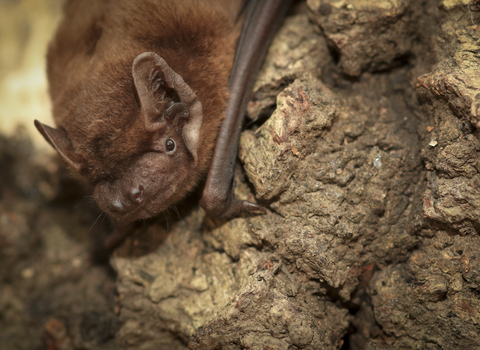
©Tom Marshall
Noctule
Our largest bat, the noctule roosts in trees and can be seen flying over the canopy in search of insect-prey, such as cockchafers. Like other bats, it hibernates over winter.
Enw gwyddonol
Nyctalus noctulaPryd i'w gweld
April to OctoberTop facts
Categori
Stats
Length: 3.7-4.8cmWingspan: 32-40cm
Weight: 18-40g
Average lifespan: 4-5 years
Protected in the UK under the Wildlife and Countryside Act, 1981. Priority Species under the UK Post-2010 Biodiversity Framework. European Protected Species under Annex IV of the European Habitats Directive.
